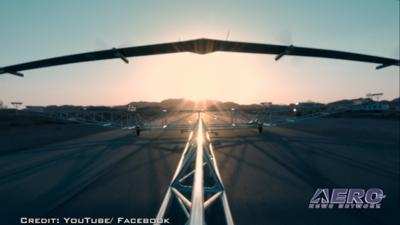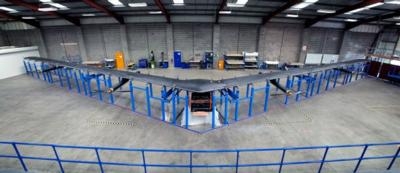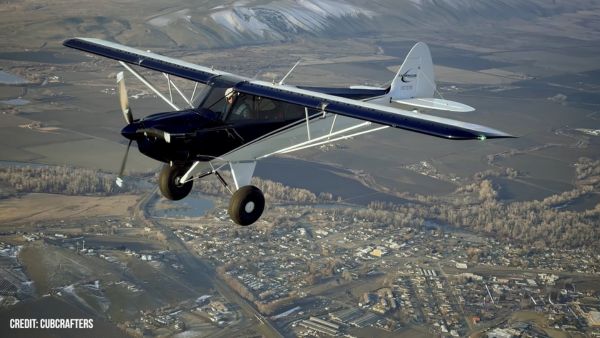Cites Strong Winds As Reason UAV Broke Apart During Test Flight
The downing of the solar-powered Facebook Aquila drone has been attributed to strong winds which caused the aircraft's wings to fail, according to the NTSB's probable cause report from the accident.

In the report, the board said that on June 28, 2016, at 0743 mountain standard time, the Facebook Aquila unmanned aircraft, N565AQ, experienced an inflight structural failure on final approach near Yuma, AZ. The aircraft was substantially damaged. There were no injuries and no ground damage. The flight was conducted under 14 Code of Federal Regulations Part 91 as a test flight, the aircraft did not hold an FAA certificate of airworthiness.
This was the first flight of the full-scale aircraft. The flight launched in restricted airspace from Yuma Proving Ground's (YPG) Site 8 UAV runway. There were no anomalies noted during the 90-minute flight.
According to the operator, at 0704, a simulated landing at 1,250 feet above sea level was performed to test the autoland feature of the autopilot. Autoland is the normal, and only, landing maneuver of the aircraft. The maneuver was executed normally, tracking the centerline and glidepath, and obeying the wave-off command. At the time of the simulated landing, the crew noted that the wind had increased above the intended test limit of 7 knots at flight altitude.
At 0737, the crew commanded a landing to the designated landing site. During the final approach, the aircraft encountered an increasing amount of turbulence and wind speeds of up to 10 knots at the surface and 12 to 18 knots, as measured by the aircraft at flight altitude. The operators post-flight telemetry analysis showed that the aircraft experienced significant deviations in pitch, roll, and airspeed, consistent with turbulence during the final approach.

At 0743, while on final approach at 20 feet above the ground, the right outboard wing experienced a structural failure with a downward deflection. Four seconds later, the aircraft impacted the ground at a groundspeed of 25 knots in an approximately wings-level attitude. The aircraft sustained substantial damage as a result of the impact and wing failure. As a result of the aircraft's design (skid landing gear, low-slung engines and propellers), the operator expected some damage during normal landings.
The operators analysis of available data indicates that the structural failure was likely initiated by a wind gust that lofted the aircraft above the glidepath about 5 seconds prior to failure. The autopilot responded to this gust by lowering the nose of the aircraft to reestablish itself on the glidepath. The airspeed then increased to 28 KIAS from the normal 24 KIAS. As the aircraft descended back onto the glidepath, the autopilot started to deflect the elevons upwards.
The operator determined that the combination of high airspeed, up elevon, and low angle of attack, resulted in increased downward lift (and torsion) on the outer wing panels. This loading exceeded its structural limit and resulted in a downward deformation and failure of the right wing. At the time of the last gust (5 seconds prior to touchdown) the aircraft was near idle power and the inboard propellers were commanded to the windmilling state - the highest drag configuration available to the autopilot.
The NTSB determined that the probable cause(s) of this accident to be a structural failure of the wing as a result of exceeding the airspeed envelope due to wind gusts which were beyond the capabilities of the autopilot. Contributing to the accident was an insufficient amount of drag to track the glideslope in the presence of atmospheric disturbances.
(Image from file)
 SpaceX to Launch Inversion RAY Reentry Vehicle in Fall
SpaceX to Launch Inversion RAY Reentry Vehicle in Fall Aero-News: Quote of the Day (04.23.24)
Aero-News: Quote of the Day (04.23.24) Aero-News: Quote of the Day (04.20.24)
Aero-News: Quote of the Day (04.20.24) ANN's Daily Aero-Linx (04.20.24)
ANN's Daily Aero-Linx (04.20.24) Aero-News: Quote of the Day (04.21.24)
Aero-News: Quote of the Day (04.21.24)




